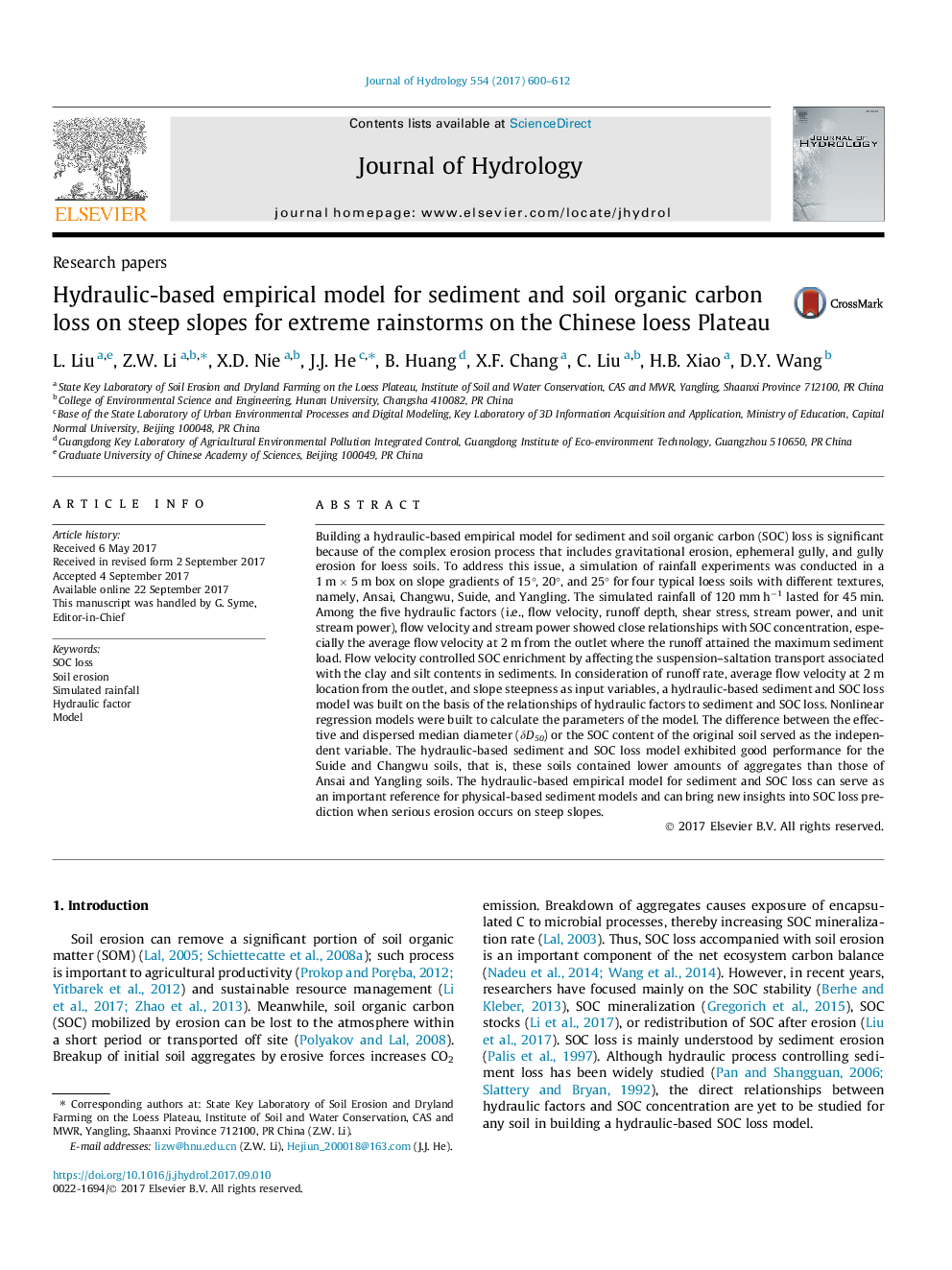| کد مقاله | کد نشریه | سال انتشار | مقاله انگلیسی | نسخه تمام متن |
|---|---|---|---|---|
| 5771122 | 1629900 | 2017 | 13 صفحه PDF | دانلود رایگان |

- Soil organic carbon (SOC) concentration was significantly related to flow velocity.
- An empirical hydraulic-based SOC loss model for individual rainfall was built.
- The model parameters can be predicted by the basic properties of the original soil.
- The prediction accuracy was high for soils with low aggregate contents.
Building a hydraulic-based empirical model for sediment and soil organic carbon (SOC) loss is significant because of the complex erosion process that includes gravitational erosion, ephemeral gully, and gully erosion for loess soils. To address this issue, a simulation of rainfall experiments was conducted in a 1 m Ã 5 m box on slope gradients of 15°, 20°, and 25° for four typical loess soils with different textures, namely, Ansai, Changwu, Suide, and Yangling. The simulated rainfall of 120 mm hâ1 lasted for 45 min. Among the five hydraulic factors (i.e., flow velocity, runoff depth, shear stress, stream power, and unit stream power), flow velocity and stream power showed close relationships with SOC concentration, especially the average flow velocity at 2 m from the outlet where the runoff attained the maximum sediment load. Flow velocity controlled SOC enrichment by affecting the suspension-saltation transport associated with the clay and silt contents in sediments. In consideration of runoff rate, average flow velocity at 2 m location from the outlet, and slope steepness as input variables, a hydraulic-based sediment and SOC loss model was built on the basis of the relationships of hydraulic factors to sediment and SOC loss. Nonlinear regression models were built to calculate the parameters of the model. The difference between the effective and dispersed median diameter (δD50) or the SOC content of the original soil served as the independent variable. The hydraulic-based sediment and SOC loss model exhibited good performance for the Suide and Changwu soils, that is, these soils contained lower amounts of aggregates than those of Ansai and Yangling soils. The hydraulic-based empirical model for sediment and SOC loss can serve as an important reference for physical-based sediment models and can bring new insights into SOC loss prediction when serious erosion occurs on steep slopes.
Journal: Journal of Hydrology - Volume 554, November 2017, Pages 600-612